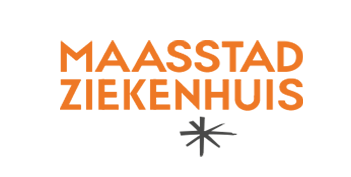Maasstad Hospital uses Simul8 to inform decision-making on National Bowel Screening

- Industry
- Healthcare
- Location
- Rotterdam, Netherlands
- Goals
- Model the implementation of an effective new bowel screening method for patients to support decision-making process
Achievements with Simul8
-
-
Developed strategy to implement the most effective method of performing BVO colon screenings
-
-
Optimized hospital current capacity, staff planning and maximized revenue
-
-
Influenced decision-making process to join the National Bowel Screening program
About the project
In early 2013, Netherlands based Maasstad Hospital was required to make a decision on its involvement in National Bowel Screening.
A number of factors had to be considered in the decision process including; hospital capacity, financial implications, quality requirements, procedural agreements and a strict certification process. In addition, each of these factors would have an effect on the internal structure of the hospital as well as staff planning in relation to the implementation of BVO colonoscopies.
To assist decision making, Maasstad Hospital approached consultancy firm Tarsius Group. Given the number of factors and the possible implications on the hospital’s organizational structure and planning, Simul8 simulation software was selected as the decision making tool.
By using Simul8, Maasstad Hospital was able to efficiently manage their outpatient clinic flow and test multiple scenarios to determine possible outcomes. This influenced their decision to join the National Bowel Screening program. Key factors to be addressed in the simulation included:
- Quality demands in relation to participation
- Capacity issues surrounding possible investments (business case development)
- Earnings & breakeven analysis
The Challenge
Using Simul8, a process simulation model of the internal implementation of colonoscopies was developed. This allowed the ability to test multiple scenarios, determine the outcome of different planning methodologies and their effect on efficiency and costs. In addition, the simulation offered insight into the effect of organizational and process changes on the throughput times of patients.
The simulation was able to determine the answers to a number of questions Maasstad Hospital had, thus influencing their decision to enter the program. Some of the key questions addressed in the simulation included :
- How many screenings had to be performed to meet costs and make a profit?
- Were there any organizational changes that had to be implemented to maximize the number of screenings without making investments to extend current capacity?
- What was the required quality of endoscopists?
- What capacity was needed to provide 30 operable colon cancers annually from this program to the surgeons, and how many advanced procedures would this provide to the MDL center?
- How much capacity was required across staffing, patient treatment areas and equipment including; endoscopists, nurses, disinfection time, endoscopy room, recovery, pre-sedation consultation and capital equipment?
With participation in the program expected to be at 60%, the simulation considered the consequences if participation was lower than expected and what factors would have an impact on participation levels. Within the simulation, the following three scenarios and their variations were developed :

Scenario 1
Increasing the number of patients from four to five patients in the same afternoon

Scenario 2
Joint intake (four patients) and two endoscopy rooms running simultaneously

Scenario 3
Variations in patient arrival rates
The Result
Using this model, Maasstad Hospital had the knowledge to implement the most effective method of performing BVO Colon screenings and know the impact this would have on their normal colon screening patients. Furthermore by implementing small changes in planning, the hospital was able to optimize their current capacity, thus maximizing revenues.
This way of looking at processes, efficiencies, cost and revenues is relatively new for Dutch Healthcare institutions. Simul8 can be used in all sorts of processes within the hospital to make the best decisions first time, rather than changing the way things work when problems arise.
Learn more about Simul8 for healthcare process improvement
Find out more about how simulation is used by healthcare organizations, read more case studies and access a range of learning resources.
Learn more